Friday Dec 19, 2025
Friday Dec 19, 2025
Wednesday, 16 July 2025 00:00 - - {{hitsCtrl.values.hits}}
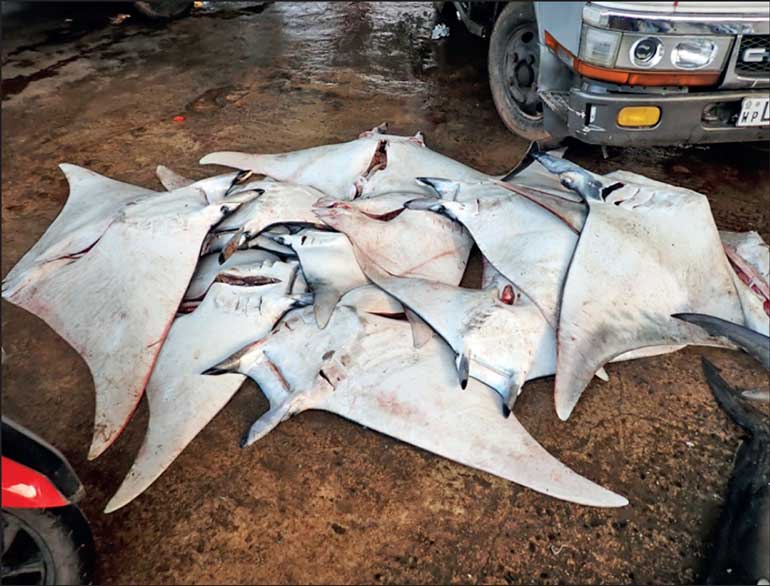
Oceanic Manta Ray (Mobula birostris) landed at a local fishery harbour
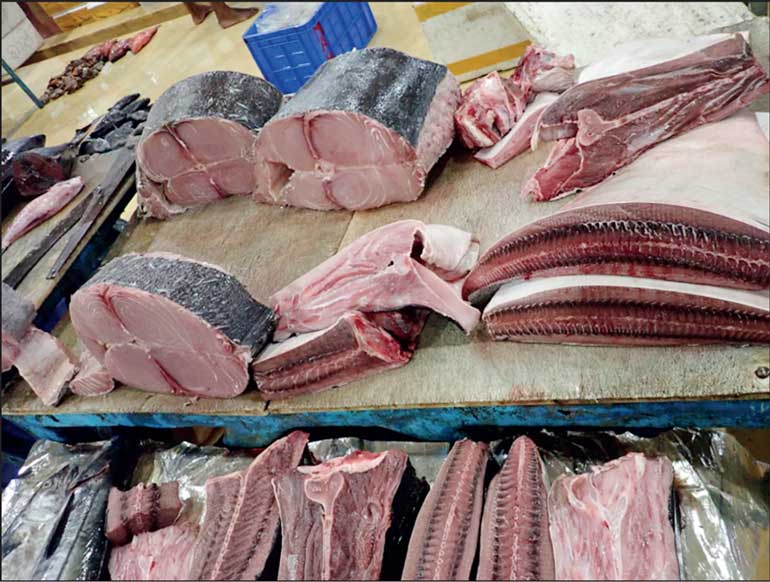
Mobula fresh meat being sold at a local fish market
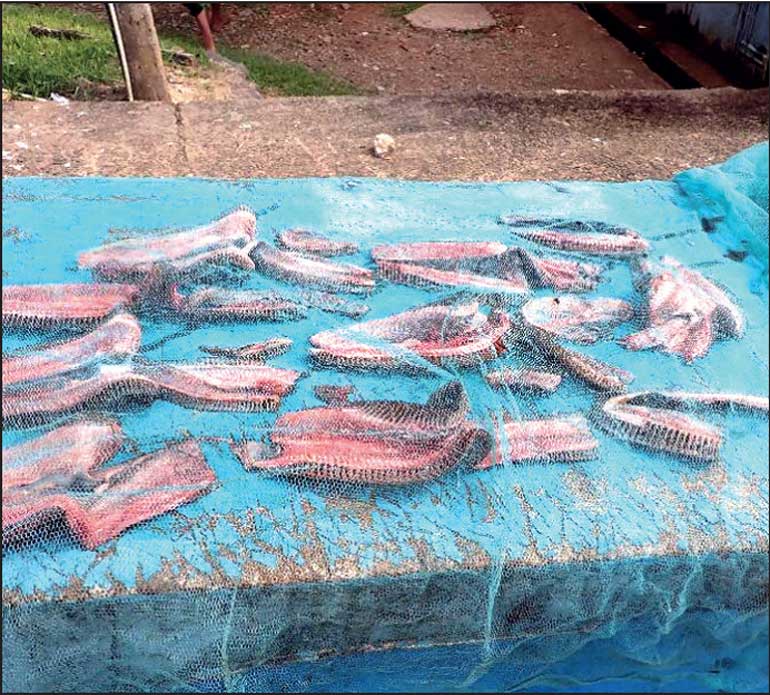
Manta and devil ray gill plates are being dried
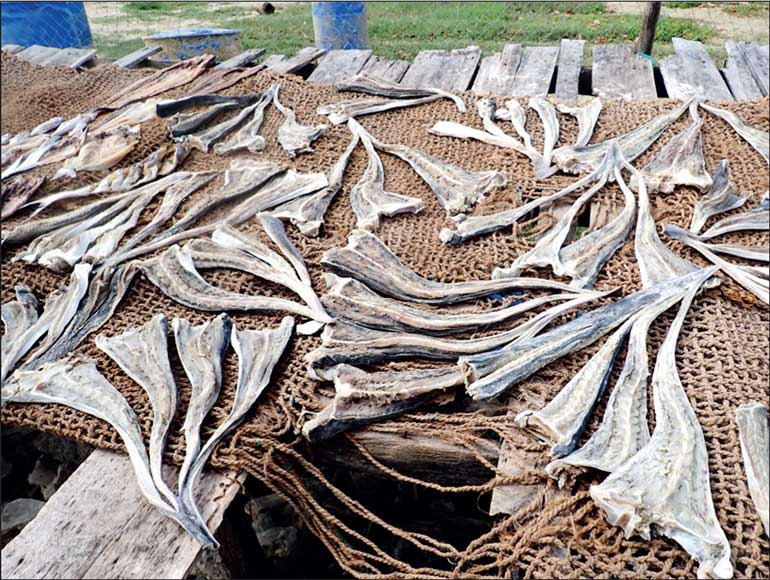
Manta or devil ray dry meat
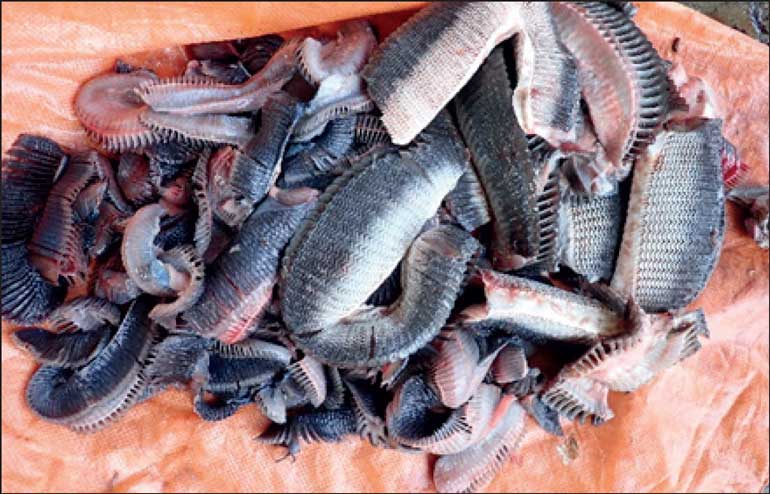
Separated devil ray gill plates
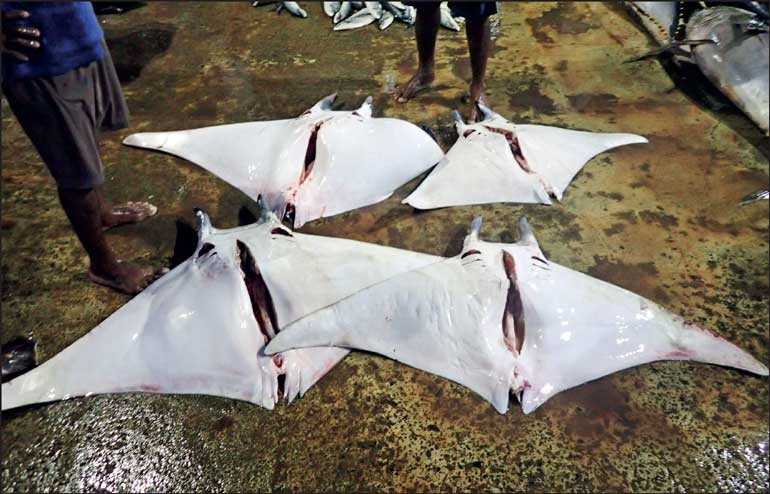
Devil rays landed from multi-day fishing boats
By Daniel Fernando
Manta and devil rays are among the ocean’s most graceful and captivating creatures. With their wide, wing-like fins and majestic movements, they glide effortlessly through tropical and subtropical waters, capturing the hearts of divers and ocean lovers around the world. But these iconic animals are increasingly under threat—targeted by global fisheries and caught unintentionally as bycatch.
Sri Lanka is one of the world’s hotspots for manta and devil ray landings, where these species are caught in large numbers, especially by tuna gillnet fisheries. These rays belong to the Mobulidae family (subclass Elasmobranchii), and six of the world’s nine species are found in Sri Lankan waters: the Oceanic Manta Ray (Mobula birostris), Spinetail Devil Ray (Mobula mobular), Sicklefin Devil Ray (Mobula tarapacana), Bentfin Devil Ray (Mobula thurstoni), Shorthorned Pygmy Devil Ray (Mobula kuhlii), and Longhorned Pygmy Devil Ray (Mobula eregoodoo). All are filter feeders, using their large mouths and gill plates to sieve plankton and small fish from the water.
These species, particularly the Oceanic Manta Ray—which can reach an impressive 7 meters across—are highly vulnerable to overfishing. They grow slowly, mature late, produce a single pup every few years, and live long lives. In fact, their reproductive rates are slower than those of leopards or dolphins. This makes them especially prone to population declines. According to the IUCN Red List, all mobulid species in Sri Lankan waters are considered Endangered.
In Sri Lanka, mantas and devil rays are mostly caught as bycatch in gillnet fisheries targeting skipjack and yellowfin tuna. Although not highly valued for their fresh meat, these rays are retained for two main reasons: local dried fish consumption and the lucrative trade in dried gill plates. These gill plates, used in traditional Chinese medicine—despite lacking scientific evidence of any health benefits—fetch high prices in Southeast Asian markets. Sri Lanka has been identified as a key exporter in the international gill plate trade, with its fishing fleets ranked among the top three globally for annual manta and devil ray catches.
At local fish landing sites, manta and devil rays are offloaded from multi-day boats, weighed, and typically processed on-site. Their gill plates are carefully extracted, often dried nearby or sent to specialised drying centres. The remaining meat is usually dried and sold for local consumption. But with fishing rates far exceeding the species’ natural reproductive rates, their populations are in steep decline.
This alarming trend calls for urgent conservation action. Stronger enforcement of existing international protections—such as those under CITES (the Convention on International Trade in Endangered Species of Wild Fauna and Flora), CMS (the Convention on the Conservation of Migratory Species of Wild Animals), and the Indian Ocean Tuna Commission—is crucial to ensure the survival of these extraordinary animals and maintenance of our national marine biodiversity.
(The writer is a marine biologist and the co-founder of Blue Resources Trust; a Sri Lankan marine research and conservation organisation, where he leads the Sri Lanka Elasmobranch Project. Since 2013 he has been providing technical support for elasmobranch management policy at conventions such as CITES, CMS, and the Indian Ocean Tuna Commission, thereby helping bridge the gap between science and policy and encouraging a shift towards sustainable fisheries. He has served as a ministerial advisor, is currently the Regional Co-Vice Chair of the IUCN Shark Specialist Group for the Indian Ocean, an MCAF Fellow, and the Vice Chair to the Sessional Committee of the CMS Scientific Council.)